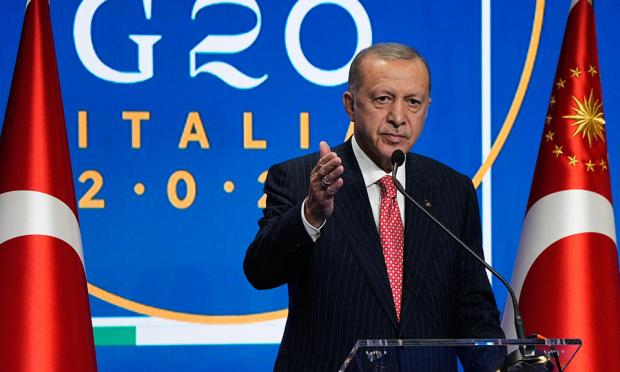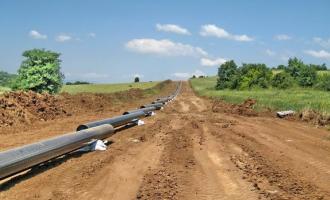It is known that Turkish President Erdogan, after the door was closed by the German Chancellor for the purchase of the Eurofighter Typhoon, said "If they don't give them to us, is there no other plane?"
After Erdogan's words, all eyes turned to the SU-57 of the Russian Sukhoi company, Turkish media reported, noting:
The SU-57
Su-35 test pilot Suleymanov shared his experience of piloting the fifth-generation Su-57 fighter aircraft, emphasizing the aircraft's superior maneuverability, saying:
"Our aircraft manufacturers and the industry that provides components for this aircraft have done a good job. Navigation and flight are a pleasure. It allows the pilot to fly in any situation, at any speed, at any angle of attack.
Suleymanov praised the SU-57, saying: "It can lead to victory."
When and how did the Su-57 programme start?
The Russian Federation made the development of a next-generation fighter aircraft one of the important parts of its defense industry strategy in the early 2000s.
In the 1990s, the next-generation fighter aircraft program of the Russian airline Mikoyan, the Mig aircraft manufacturer, was delayed for 9 years due to financial difficulties, and eventually the Kremlin administration scrapped the Mig-1.44 next-generation fighter aircraft project, which it gave to Mikoyan in 1991, in 2000.
Sukhoi Aircraft Company was awarded the contract under the new PAK FA fighter project, announced in 2002.
In 2007, Russia and India reached an agreement to jointly develop modified variants of the Su-57. Although India committed to purchase 214 single-seat Su-57s in 2010, it initially reduced this commitment to 144 aircraft in 2012 and then announced its withdrawal from the joint program in 2018.
The reason for India's withdrawal from the Su-57 program was that the stealth characteristics of the aircraft's radar were not at the desired level.
Sukhoi, on the other hand, continued its production and development activities and continued to meet the orders of the Russian Air Force.
What are the characteristics of the Su-57, how does it differ from the F-35?
The Su-57, a fifth-generation aircraft built with new technologies, with Sukhoi's card maker defining the aircraft as "an aircraft invisible to radar, with high maneuverability and the ability to perform supersonic flight".
The Su-57, which is often compared to the US fifth-generation F-35 fighter aircraft, can carry more ammunition than the F-35 with a maximum take-off weight of 37 tonnes, a maximum speed of 2,600 km and a flight ceiling of 20,000 metres.
The F-35's maximum speed is 1930 km/h and its maximum altitude is 15,240 meters.
However, it is reported that the F-35's stealth radar systems are more effective than the Su-57.
It is known that the Su-57, a larger and heavier aircraft than the F-35, was developed to consolidate air superiority and therefore can carry more ammunition.
The F-35 is seen as an aircraft that can operate in different scenarios by more effectively using its stealth capability.
What are the unit prices for Su-57 and F35?
These two aircraft are equipped with superior combat technologies and features and can put the enemy in a difficult situation in air operations. Therefore, the unit prices seem quite expensive.
In the production program of the F35 fighter aircraft,Turkey, England, Italy, Australia, Canada, Denmark, the Netherlands and Norway appeared as official partners.
Turkey was excluded from this programme because of tensions with the USA.
The price of the F35 is known to be around $115 million per aircraft. The unit price of the Su-57, the 5th generation fighter aircraft developed by Russia, appears to start at $40 million.
Purchase cost of the Eurofighter Typhoon-Technical characteristics
The purchase cost of the Eurofighter Typhoon is approximately $90 million.
It is a fighter-bomber aircraft with two Eurojet EJ200 engines, single and dual pilot versions.
Length: 15.96 m (52.4 ft)
Crew: 1 or 2 persons
Empty Weight: 11,000 kg (24,000 lbs) Loaded Weight: 16,000 kg (16,000 lbs) Max Take-off Weight: 23,500 kg (51,800 lb)
Engine: 2 x Eurojet EJ200 turbofan afterburners, Engine power: 60 kN (13,500 lbf), Fuel capacity: 5,000 kg (11,020 lb)
Maximum speed: High altitude: (2495 km/h or 1550 mph) Sea level: 1.25 Mach (1530 km/h or 950 mph)
Range: 2900 km (1,800 mi)
Based on their characteristics, the F-35 is truly a stealth aircraft, so it has the edge over the Su-35 and the Eurofighter Typhoon, which come next.
Despite the "lionization" Erdogan cannot turn to the Russian market
With regard to the Turkish claims of seeking fighter jets from Russia, these are unfounded for the following reasons:
1. The US would impose new economic sanctions on Turkey, sinking its weak economy, causing internal friction and serious social problems that would turn against Erdogan.
2.The existing Turkish air force would gradually suffer the fate of the Iranian air force after the fall of the Shah and the rise of Khomeini, running out of spare parts and becoming completely obsolete, at least until 2030, when, if all goes well, the indigenous KAAN fighter would enter the arsenal of the Turkish Air Force.
Finally, we point out something extremely serious, that the much publicized domestic " UZGUR" upgrade program of the existing F-16 BLOCK-30-40-50 of the Turkish Air Force to BLOCK-70 is not performing as expected, otherwise why is Erdogan begging Germany for Eurofighter and the US for F-16BLOCK-70?
Greece in a position of strength
After the above, Greece with Rafale, F-16 VIPER and after 2028 with F35, will dominate for the next years, at least until 2030 in the air in the Aegean and SE Mediterranean against Turkey.
The above puts Greece in a position of strength in the talks with Turkey on December 7, something that should be taken very seriously by our government.





